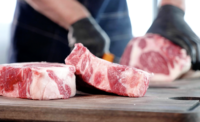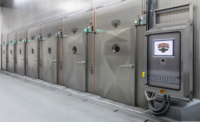Craig Souser, president and CEO of JLS Automation shares some insights on automation efforts in the meat industry .
What are some common strategies meat and poultry processors use when incorporating automation to improve operational efficiency?
Something that we promote is the idea of walk then run. It’s tempting to go for the big payoff and automate a major portion of the labor. This is valid usually only for companies with significant experience with automation. We like to see processors start slowly, get some wins, gain the confidence of the plant folks, and build a good resume before stepping into the bigger projects.
What unique worker safety training/guidelines are needed when incorporating robotics into meat and poultry production?
Today’s robotic systems are generally very safe, but safety systems can be defeated so it’s important that appropriate training and familiarity with the safety systems is accomplished. Any attempt to defeat or work around a safety system should have strong consequences.
How can facility design be optimized to get the most efficiency out of processing and packaging automation?
Work with companies that have experience in line layout and providing more than just a single unit operational machine. You must think of the whole as a complete system and not a collection of independent functions.
What are some things processors should keep in mind when incorporating automation into their ERP process control and analysis efforts?
Automation will expose your shortcomings. Don’t be surprised if the results are lower than targeted, it usually means something upstream will need to tighten up – generally, a good thing. Make sure that you are analyzing complete lines and finding the bottlenecks that may have been there before, but are more noticeable now that automation is in place.

.png?height=96&t=1647275041&width=96)



Report Abusive Comment